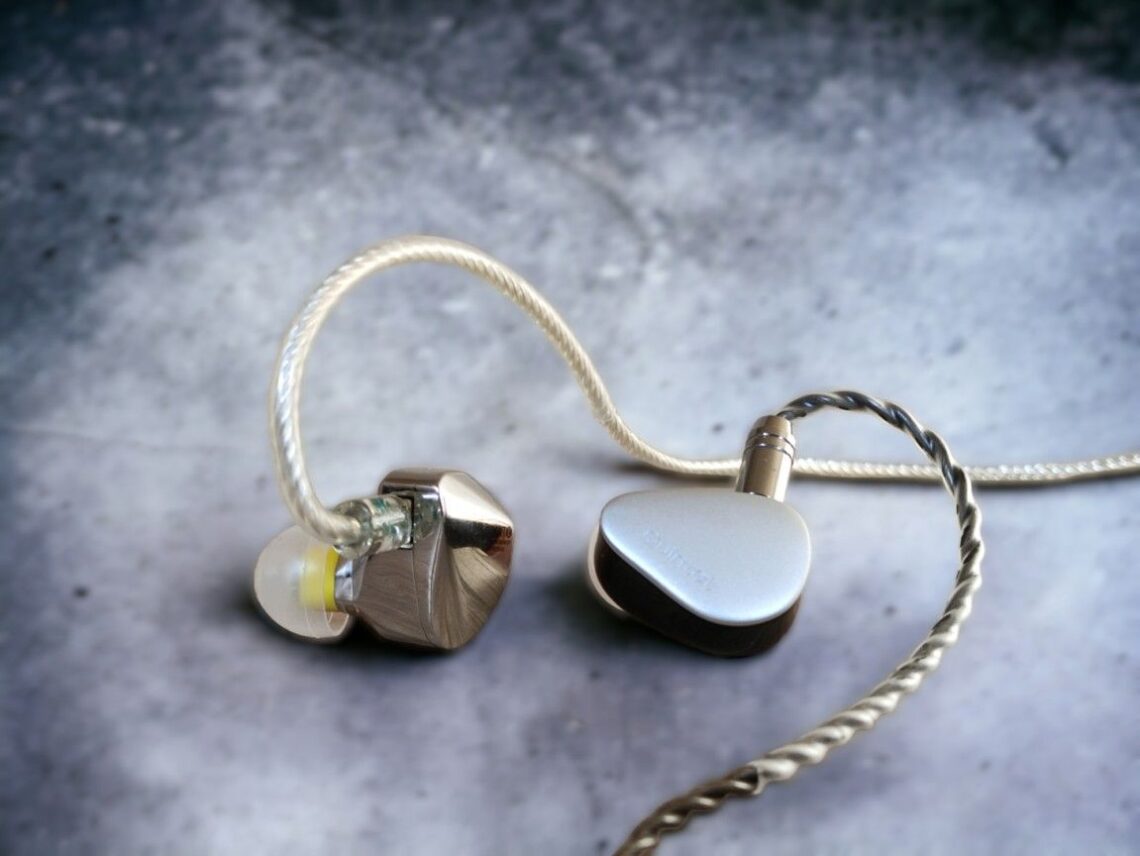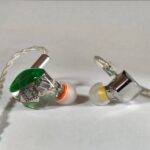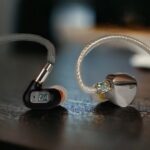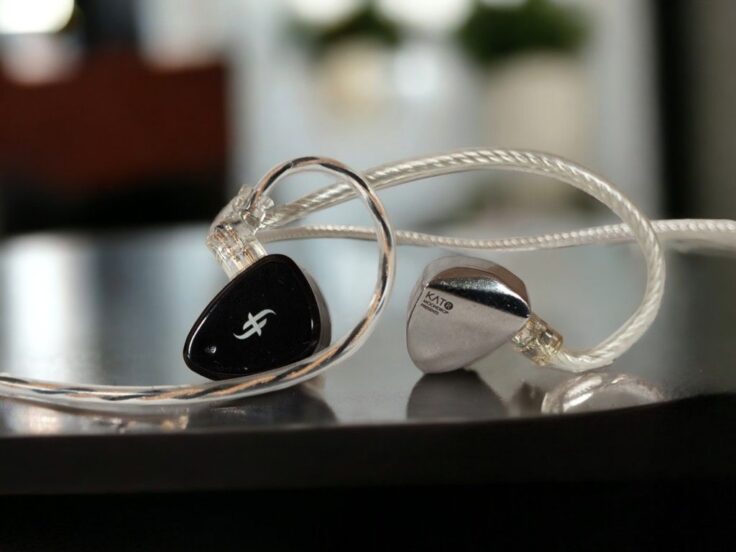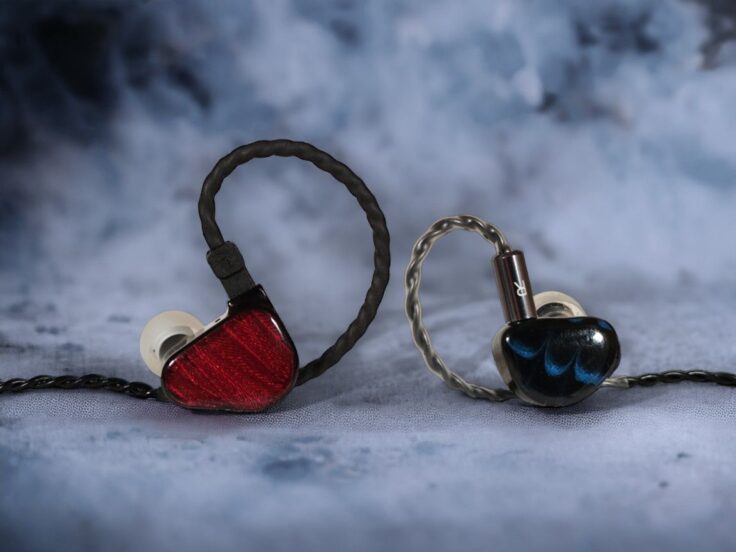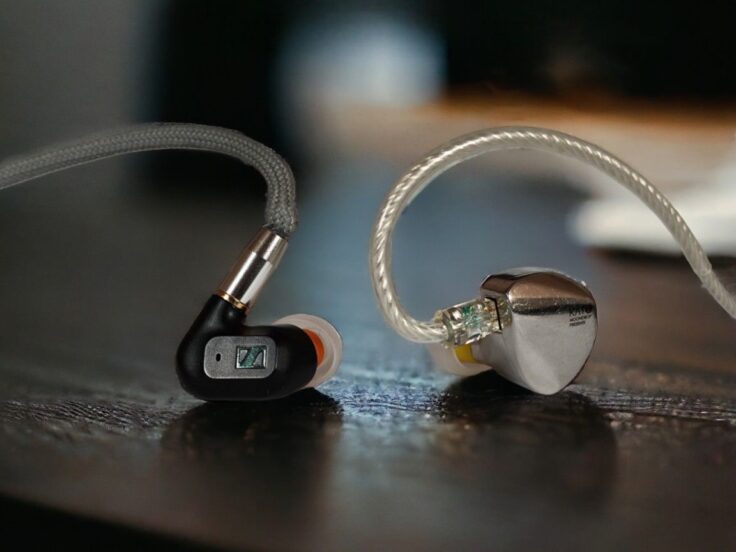The Kiwi Ears Quintet and Moondrop Kato have proved to be very popular IEMs at their price point, which is slightly above and below $200. They have different tunings but are both relatively neutral in absolute terms.
The Quintet has 5 drivers per side. There are 4 different types of drivers: 1 Diamond-Like Carbon (DLC) Dynamic Driver (DD), 2 balanced armature (BA) drivers, 1 planar magnetic driver, and 1 piezoelectric (PZT) bone conductor.
These 5 drivers are fitted into a surprisingly small housing made of a polymer material with a metal faceplate. It is very light and fits very well in the ear.
The Kato’s elegantly designed all-metal brass body houses a single 10mm dynamic driver. It features a choice of two pairs of replaceable nozzles (steel and brass). They do not sound very different but the brass has a little bit more bass. In this review, however, I will stick to the steel nozzles.
The Kato features an ergonomic design and even though it is made out of metal it is not especially heavy. It is comfortable to wear.
Full reviews here:
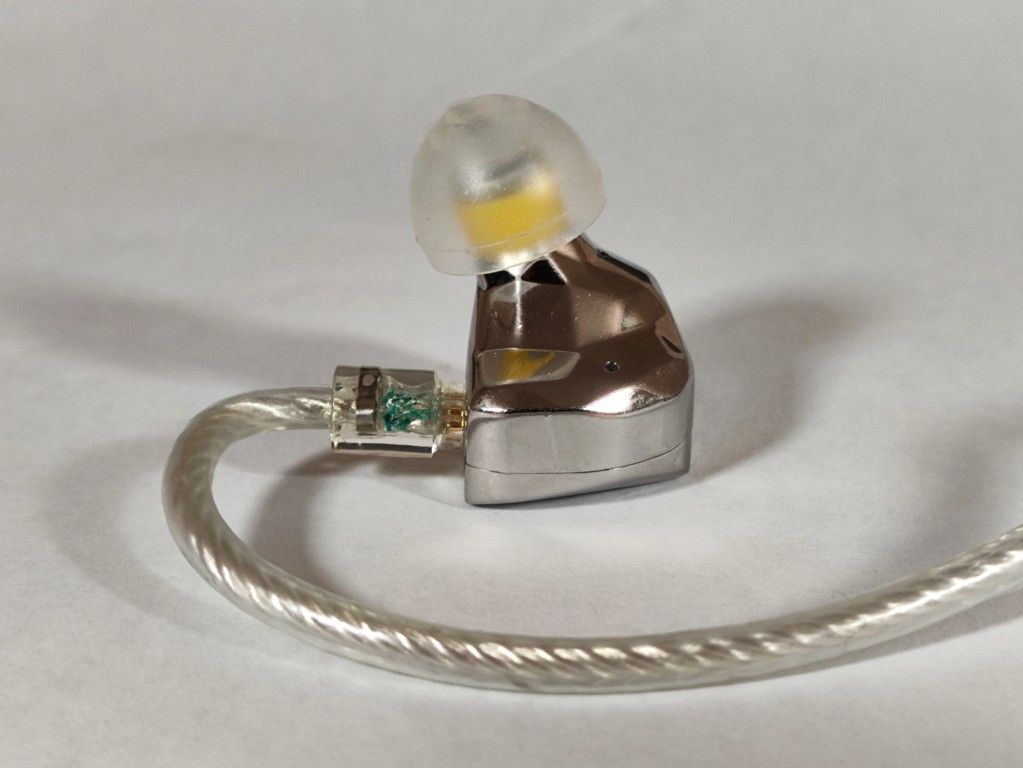
MOONDROP KATO SPECIFICATIONS
- Driver: Single 10mm-ULT dynamic driver
- Diaphragm: 3rd generation DLC composite diaphragm
- Impedance: 32Ω ±15%(@1KHz)
- Sensitivity: 123dB/Nrms (@1KHz)
- Detachable silver-plated high-purity copper cable
- IEM cable socket: 0.78-2 Pin sunken design
- Cable termination plug: 3.5mm single-ended plug
- Frequency response range: 10Hz-45kHz
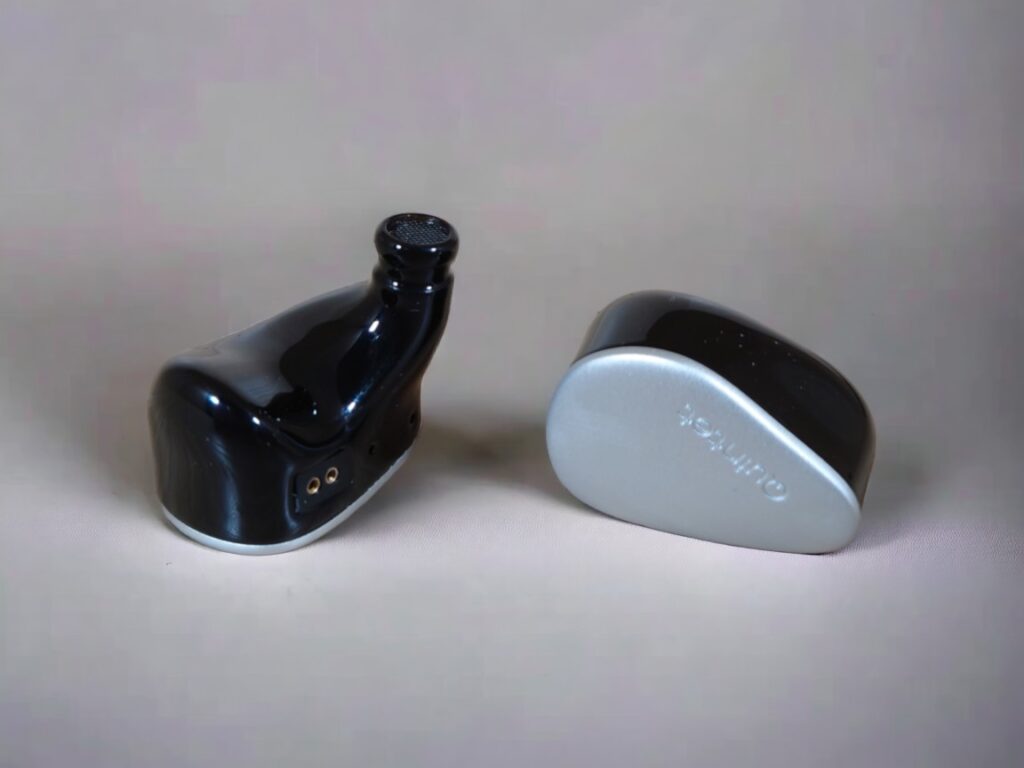
KIWI EARS QUINTET SPECIFICATIONS
- Drivers: 1 Diamond-Like Carbon (DLC) dynamic driver, 2 balanced armature (BA) drivers, 1 planar magnetic driver, and 1 piezoelectric (PZT) bone conductor
- Impedance 32 Ohms
- Sensitivity: 106 dB
- Included cable: 1.2 m Detachable Silver-Plated OFC Cable
- Cable plug type amp: 3.5mm
- Cable plug IEM: Detachable 0.78mm 2 Pin
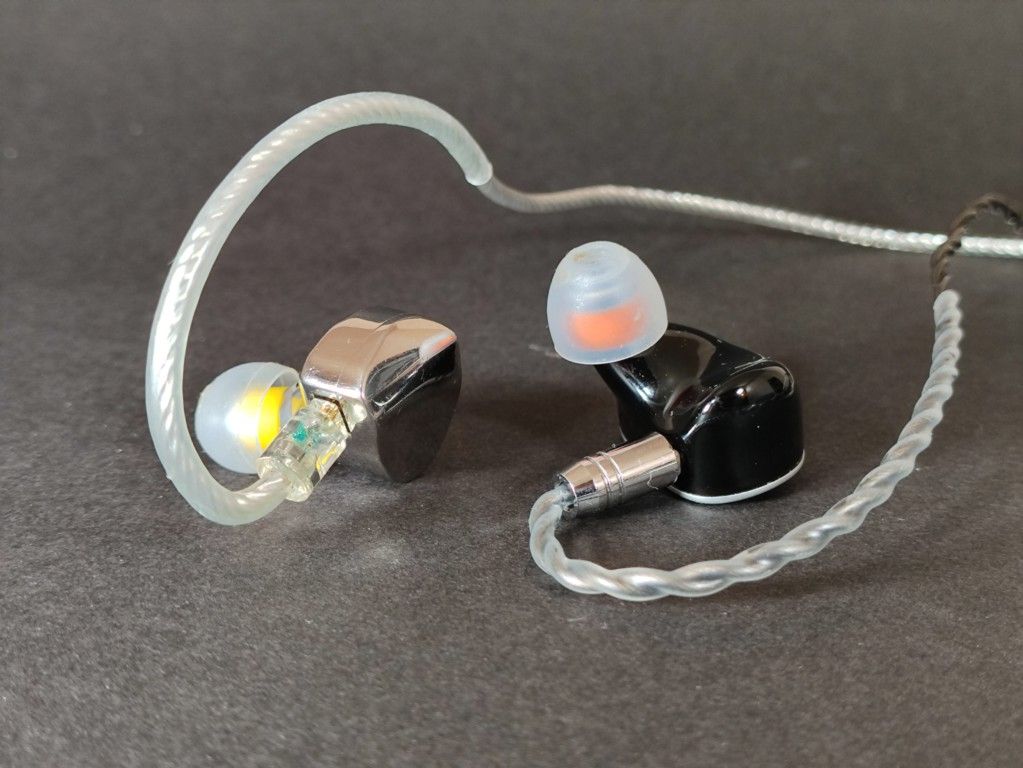
COMPARISONS
For this comparison, I used the Topping A90 amp and the RME ADI-2 DAC FS as a source.
The Fall by Ministry
They sound quite similar. The Kato is a bit meatier due to a slightly fuller-sounding bass, the Quintet is slightly tighter and clearer with a bit better instrument separation.
Don’t Panic by Coldplay
Nice and well-balanced presentation from the Kato. The bass is warm and full-sounding without being overpowering. The midrange is sweet. The treble is nicely clear and inoffensive.
Moving over to the Quintet, I immediately notice a higher sense of clarity. Everything seems better defined. The bass is tighter and there is more air and space between the instruments. The tonal balance, however, is quite similar.
Magnetic North by Todd Sickafoose
Fabulously presented standing bass from the Quintet. The guitar is glowing. Lots of space and great imaging.
The Kato sounds relatively similar – which is saying it sounds very good. However, the bass isn’t quite as tight and imaging is not as precise. There’s a little less space between instruments.
Angel by Massive Attack
Oh, the bass of the Quintet. It’s such a pleasure to listen to. Super tight yet full-bodied and with just the right presence and massive punch.
The Kato also sounds very good, but again, with somewhat less clarity and definition.
Higdon Violin Concerto Fly Forward by Hilary Hahn
Very enjoyable on the Kato. Smooth, yet lively. Good sense of image depth. Detailed but in a liquid way, not too crisp and aggressive in any way.
The Quintet is also very good, with even more clarity, a little crisper. There is more texture to the strings and better separation. The tonality of the two IEMs is similar, but not identical.
Midnight City by M83
The Quintet sounds very textured and has great layering. The soundstage is wide and deep with good imaging and instrument separation.
The Kato sounds more organic, full-bodied, lusher and warmer. You might lose some of the detail but I prefer the overall presentation of the Kato here.
Sit Down Stand Up by Radiohead
They sound relatively similar here. The Quintet generally has a drier timbre, making it feel a bit more textured while the Kato is a bit smoother.
Tide of Trepidation by EST
The bass is stronger with the Quintet. The Kato isn’t bass-shy but gives more attention to the piano. Both sound quite wide and open and are very enjoyable.
WRAPPING IT UP
Sound Signature
The Quintet and Kato have a relatively similar sound signature. They’re mildly V-shaped, which often is called U-shaped, with slightly emphasized bass and treble.
Treble
There is more articulation and raw detail with the Quintet. However, the Kato isn’t far behind but it presents detail in a smoother and more liquid manner.
Midrange
Even though they are similarly tuned in the midrange area they have different characters. The Kato is smoother and more organic sounding, while the Quintet is more textured and offers more detail, albeit in a drier-sounding manner.
Bass
Both earphones have good bass performance. Neither of them has too much quantity and both offer great quality. The Quintet is drier with more texture, the Kato sounds smoother and more organic.
Soundstage and Imaging
They have a very nice and open soundstage with good imaging. However, the Quintet is even a bit more open-sounding and has even better precision with regard to the imaging.
Detail, Dynamics and Timbre
I generally find the Quintet to be slightly better in detail retrieval and raw dynamics, but it varies from track to track. What is very clear is that the Quintet has a more explicit way of presenting detail, it is rawer, and it has more texture. The Kato is more subtle and less articulate.
The Quintet is the more analytical sounding of the two. It has a drier tonality with crisper detail. However, I prefer the timbre of the Kato, which sounds more organic and natural. It is a trade off and I appreciate them both.
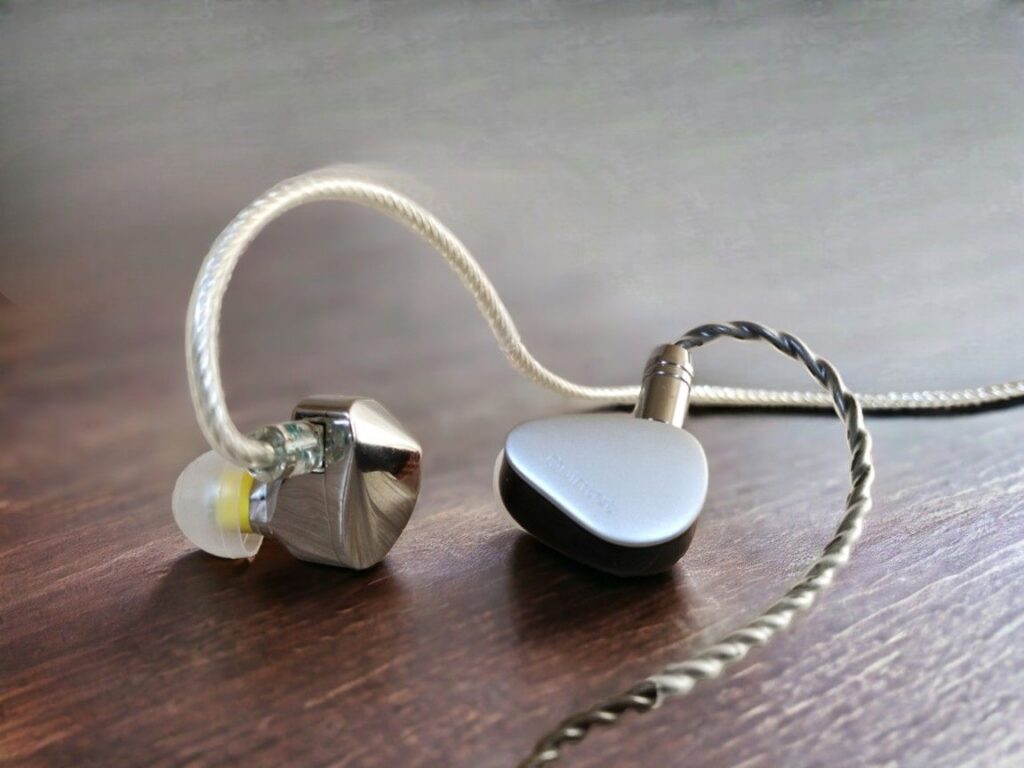
CONCLUSION
In conclusion, both the Moondrop Kato and Kiwi Ears Quintet offer impressive sound quality with similarities in their mildly V-shaped sound signature. The Quintet stands out with its articulate detail, wider soundstage, and clearer imaging, while the Kato delivers a smoother, more organic sound. Ultimately, the choice between the two depends on personal preference for either the Quintet’s more analytical precision or the Kato’s propensity to smoothness and warmth.
- Buy on Linsoul: Kiwi Quintet
- Buy on Amazon: Kiwi Quintet
- Buy on Linsoul: Moondrop Kato
- Buy on Amazon: Moondrop Kato
We make earnings through affiliate links and any purchase you make on Amazon or Linsoul clicking one of our links will give us a small provision at no cost to you.
We only get a provision for items that are not returned, so there’s no incentive for us to recommend something that’s not good.
Linsoul : Headphones, Earbuds, Wireless Earbuds, Desktop DAC/AMP, Portable DAC/AMP, Digital Audio Players,
Amazon: Headphones, IEMs, Headphone Amplifiers, Home Audio or Anything else.
.
If you enjoyed this article or other content on The Headphoneer, you might consider leaving a small donation to keep this website up and running. No donation is too small. Thanks for supporting us!
If you like our work please follow us on Instagram, Facebook and Twitter , it will help us grow. Sharing is caring 🙂


